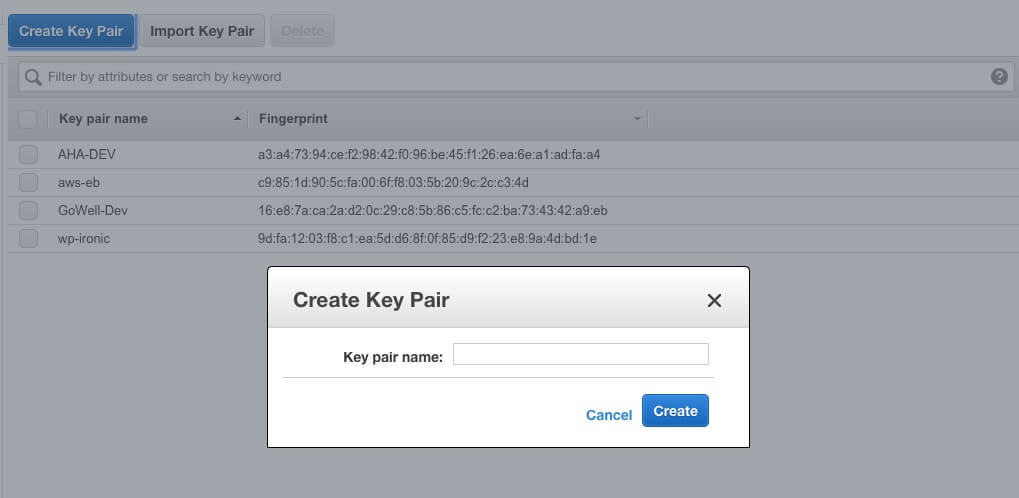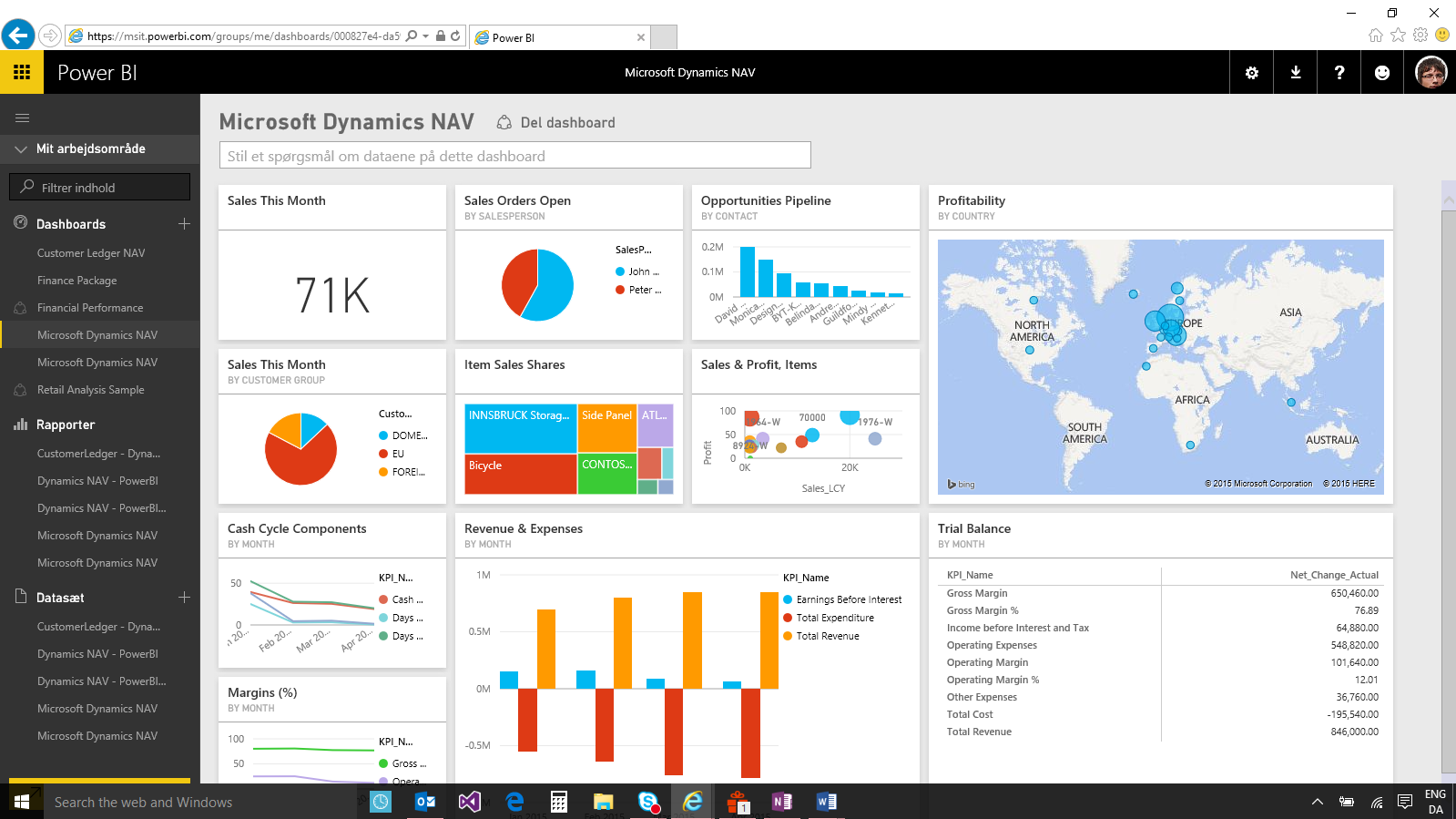Microsoft Powerbi For Mac
We’re continuously developing new capabilities to enable your digital transformation. The Power BI public product roadmap provides a glimpse into the capabilities that will become available in the next wave of product updates.
First on our list of top 10 alternatives to Power BI is Sisense, a business intelligence.
- Download Microsoft Power BI and enjoy it on your iPhone, iPad, and iPod touch. Access your data from anywhere. Get notifications, annotate and share, and dive deep into your data with powerful features for decision making on the go.
- Vince, another option to look at is Turbo.net, which can stream Power BI to your Mac from the cloud: Run Power BI Desktop on Mac - Turbo.net. This doesn't require running any VMs on your Mac.
Power BI simplifies how organizations derive insights from transactional and observational data. It helps organizations create a data culture where employees can make decisions based on facts, not opinions. We’re investing in four key areas that drive a data culture: self-service analytics for everyone, a unified platform for enterprise BI, big data analytics with Azure Data Services, and pervasive artificial intelligence for BI.
Self-service analytics for everyone
Microsoft Power Bi Para Mac
To build a data culture, everyone in your organization needs to be empowered to work with data. At its core, BI is a collaborative process. We’re investing in simple, intuitive experiences that are deeply integrated with Office 365. Get monthly updates that’ll include navigation, streamlined viewing, and user collaboration—focusing on simpler ways to explore, find, and share insights. Also take advantage of rich authoring capabilities from evolved formatting controls to performance tuning tools.
Unified platform for enterprise BI
Enable your organization to create a global, governed, scalable, secure, and unified BI platform that meets the needs of both self-service and centralized BI. Move to one modern, compliant platform as the single destination for business analytics with key enterprise-facing updates on enterprise-grade semantic models and reporting at worldwide scale.
Big data analytics with Azure Data Services
As your data volumes and complexity continue to grow exponentially, invest in an analytics solution that’s easy-to-use, fast, and secure, so you can extract critical insights from your data and take timely actions to maintain a competitive advantage. Our investment in petabyte-scale analytics makes Power BI and Azure an unmatched combination.
Pervasive artificial intelligence for BI
Help your employees explore your data, automatically find patterns, understand what your data means, and predict future outcomes to drive business results. The new AI capabilities—pioneered in Azure and now available in Power BI—require no code, enabling all Power BI users to discover hidden, actionable insights in your data and drive better business outcomes.
Availability and details
The release plan outlines our commitment to continuously deliver new capabilities and provides early visibility for upcoming release waves. Please connect with us to learn more.
Power Bi Desktop Download
Explore Dynamics 365 and Power Platform product availability by geography
Microsoft Power Platform
Dynamics 365
Dynamics 365

Pre-release product or features may be substantially modified before commercial release. This roadmap represents a product view and isn’t indicative of final licensing of individual features. Microsoft makes no warranties, express or implied, with respect to the information provided.
Connect, learn, and engage in the community
Microsoft Power Bi For Mac Os
-->
This article lays out the minimum hardware and software requirements to install and run Power BI Report Server.
Processor, Memory, and Operating System Requirements
| Component | Requirement |
|---|---|
| .NET Framework | 4.8 If the server doesn't have internet access, you can manually install the .NET Framework from Microsoft .NET Framework 4.8 (Offline Installer) for Windows. For more information, recommendations, and guidance about the .NET Framework 4.8 see .NET Framework Deployment Guide for Developers. Windows 8.1, and Windows Server 2012 R2 require KB2919355 before installing .NET Framework 4.8. |
| Hard Disk | Power BI Report Server requires a minimum of 1 GB of available hard-disk space. Addition space will be required on the database server that is hosting the report server database. |
| Memory | Minimum: 1 GB Recommended: At least 4 GB |
| Processor speed | Minimum: x64 Processor: 1.4 GHz Recommended: 2.0 GHz or faster |
| Processor type | x64 Processor: AMD Opteron, AMD Athlon 64, Intel Xeon with Intel EM64T support, Intel Pentium IV with EM64T support |
| Operating system | Windows Server 2019 Datacenter Windows Server 2019 Standard Windows Server 2016 Datacenter Windows Server 2016 Standard Windows 10 Home Windows 10 Professional Windows 10 Enterprise |
Note
Installation of Power BI Report Server is supported on x64 processors only.
Database server version requirements
SQL Server is used to host the report server databases. The SQL Server Database Engine instance can be a local or remote instance. The following are the supported versions of SQL Server Database Engine that can be used to host the report server databases:
- Azure SQL Managed Instance (Power BI Report Server January 2020 version and later)
- SQL Server 2019
- SQL Server 2017
- SQL Server 2016
- SQL Server 2014
- SQL Server 2012
When you create the report server database on a remote computer, you have to configure the connection to use a domain user account or a service account with network access. If you decide to use a remote SQL Server instance, consider carefully which credentials the report server should use to connect to the SQL Server instance. For more information, see Configure a Report Server Database Connection.
Considerations
Install Power Bi
Power BI Report Server will install default values to configure the core settings required to make a report server operational. It has the following requirements:
- The supported languages for Power BI Report Server are - English, German, Spanish, Japanese, Italian, French, Russian, Chinese Simplified, Chinese Traditional, Portuguese Brazil, Korean
- A SQL Server Database Engine must be available after setup and before you configure the database for the report server. The Database Engine instance hosts the report server database that Reporting Services Configuration Manager will create. The Database Engine is not required for the actual setup experience.
- Reporting Services Features Supported by the Editions of SQL Server outlines differences between the editions of SQL Server.
- The user account that runs Setup must be a member of the local Administrators group.
- The user account that runs Reporting Services Configuration Manager must have permission to access and create databases on the Database Engine instance that hosts the report server databases.
- Setup must be able to use the default values to reserve the URLs that provide access to the report server and the web portal. These values are port 80, a strong wildcard, and the virtual directory names in the format ReportServer and Reports.
Read-only domain controller (RODC)
You can install the report server in an environment that has a Read-Only Domain Controller (RODC). However, Reporting Services needs access to a Read-Write Domain Controller to function properly. If Reporting Services only has access to a RODC, you may encounter errors when trying to administer the service.
Power BI reports and Analysis Services live connections
You can use a live connection against tabular or multidimensional instances. Your Analysis Services server has to be the proper version and edition to work properly.
Microsoft Power Bi Desktop
| Server version | Required SKU |
|---|---|
| 2012 SP1 CU4 or later | Business Intelligence and Enterprise SKU |
| 2014 | Business Intelligence and Enterprise SKU |
| 2016 and later | Standard SKU or higher |
Microsoft Power Bi For Mac
Next steps
What is Power BI Report Server?
Administrator overview
Install Power BI Report Server
Download Report Builder
Download SQL Server Data Tools (SSDT)
Microsoft Power Bi App For Mac
More questions? Try asking the Power BI Community
